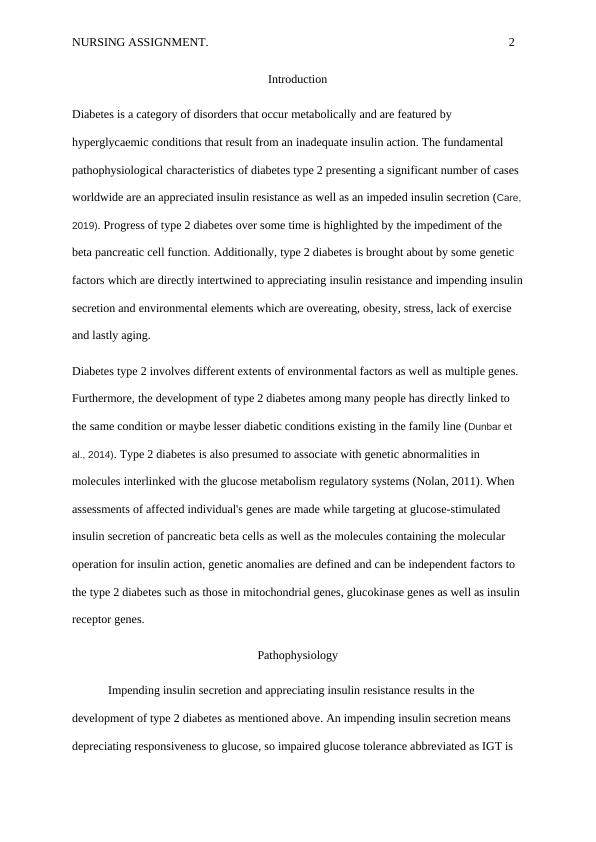Nursing Assignment on Diabetes Type 2: Pathophysiology, Causes, and Management
This course builds on foundational nursing courses and focuses on nursing and associated care for patients with specific disease processes. It emphasizes the use of bioscience knowledge to understand pathophysiological processes and the ability to prescribe and undertake nursing interventions. Critical reflection on clinical practice and use of current research are also emphasized.
Added on 2022-12-19
About This Document
Nursing Assignment on Diabetes Type 2: Pathophysiology, Causes, and Management
This course builds on foundational nursing courses and focuses on nursing and associated care for patients with specific disease processes. It emphasizes the use of bioscience knowledge to understand pathophysiological processes and the ability to prescribe and undertake nursing interventions. Critical reflection on clinical practice and use of current research are also emphasized.
Added on 2022-12-19
End of preview
Want to access all the pages? Upload your documents or become a member.




